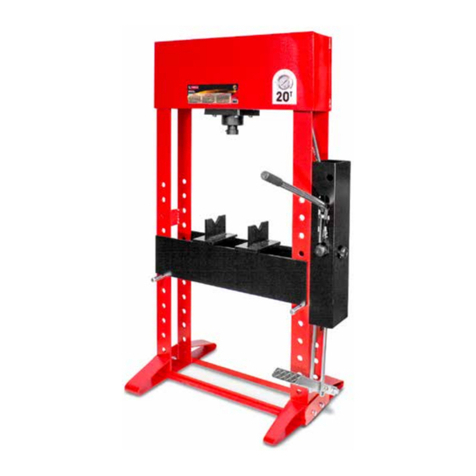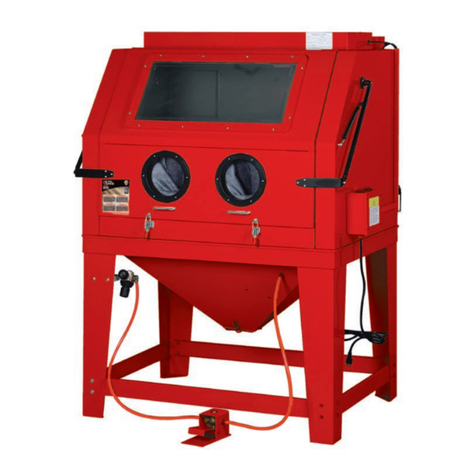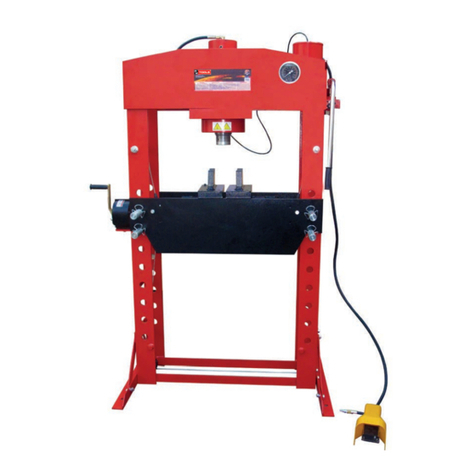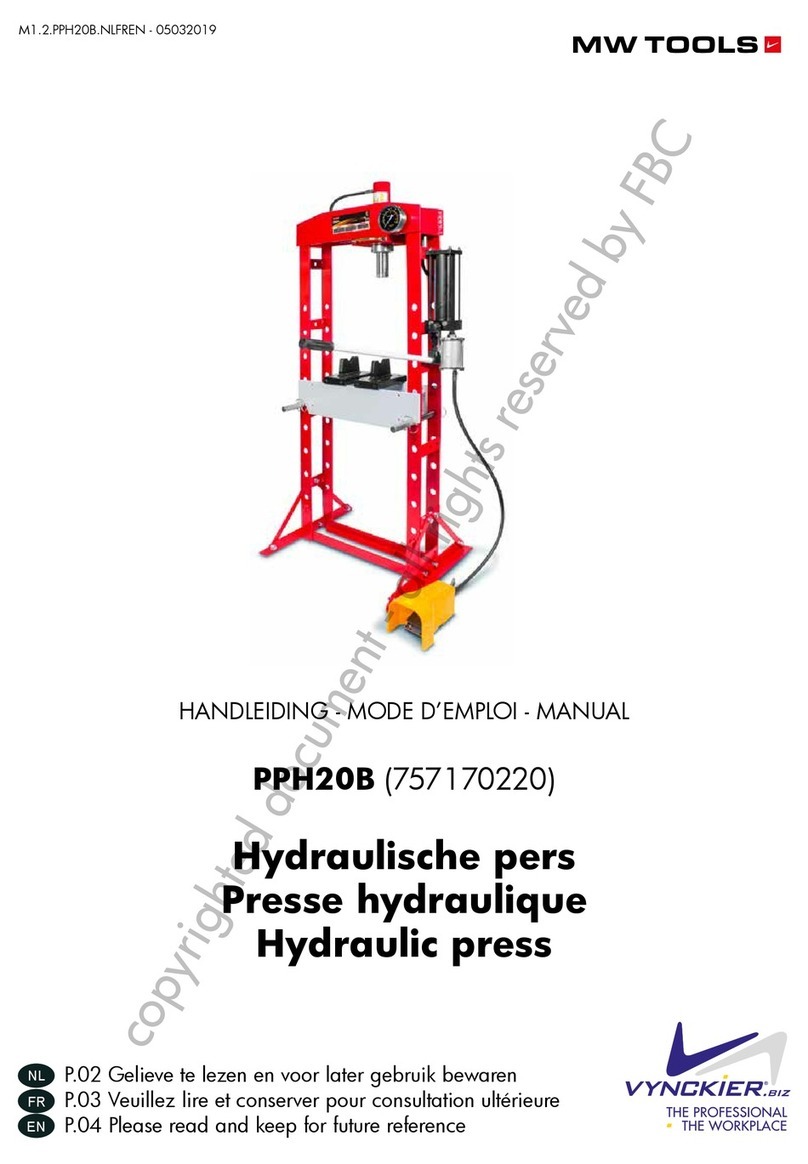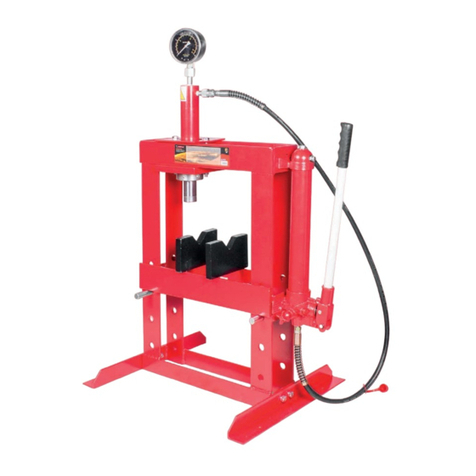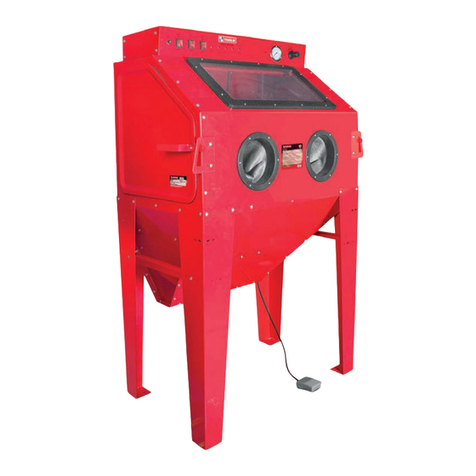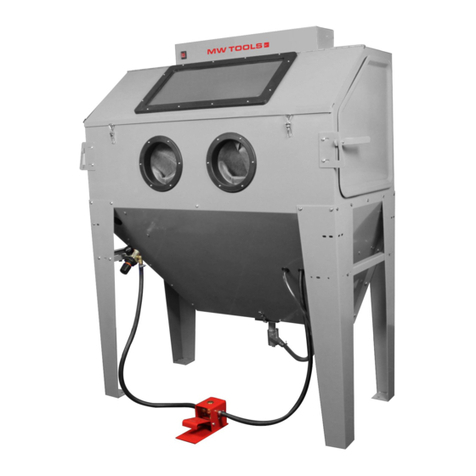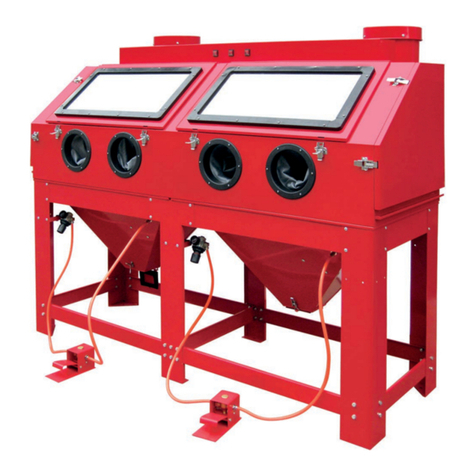
6
CAT02010 - NLFREN - v1.0 - 09082016
FR
TOOLS
Sécurité
Lisez attentivement les instructions de ce manuel avant d’utiliser le produit.
Les consignes de sécurité dans ce manuel ne couvrent pas toutes les situations possibles de danger. Le sens
commun et la prudence doivent toujours être de mise lors de l’assemblage et de l’utilisation du produit.
Contactez votre revendeur en cas de problèmes ou de questions.
• Maintenez l’espace de travail propre et bien éclairé. Le désordre et le manque d’éclairage peuvent être à
l’origine de graves accidents.
• N’utilisez pas la sableuse dans un environnement explosif, par exemple en présence de liquides
inammables, de gaz ou de poussières. Les outils produisent des étincelles qui peuvent enammer les
poussières ou les fumées.
• Tenez les curieux, les enfants et les visiteurs à l’écart pendant le fonctionnement de la sableuse. La
distraction peut vous faire perdre le contrôle.
• Ne forcez jamais un outil. Utilisez l’outil correct pour chaque travail. Un outil correct effectuera le travail
plus sûrement et plus efcacement dans les limites de ses capacités.
• Rangez les outils hors de portée des enfants et autres personnes inexpérimentées. Les outils sont
dangereux dans les mains d’utilisateurs inexpérimentés.
• Évitez tout démarrage involontaire. Assurez-vous que la valve est fermée lorsque l’appareil n’est pas en
service.
• Maintenez le tuyau d’air en bon état et remplacez-le immédiatement s’il est endommagé. Tenez le tuyau à
l’écart de tout objet ou surface qui pourrait l’endommager.
• N’utilisez pas la sableuse:
- Si vous êtes fatigué ou sous l’inuence de drogues ou d’alcool.
- Si vous portez des vêtements lâches ou des bijoux. Gardez les cheveux longs en arrière et à l’écart des
parties en mouvement.
- Si vous êtes trop loin ou en équilibre instable. Une mauvaise position peut causer de graves blessures.
• Lors de l’utilisation de la sableuse:
- Portez les équipements de protection adaptés, tels que des lunettes de sécurité, un masque anti-poussière,
des chaussures antidérapantes.
- Vériez que tous les outils de service ont été retirés de l’espace de travail avant la mise en marche de
l’appareil.
• Fixez et sécurisez la pièce à travailler avec des moyens de serrage appropriés. Ne maintenez pas la pièce
avec vos mains.
• N’utilisez que des accessoires recommandés pour votre appareil.
• L’entretien et les réparations doivent être effectué par du personnel qualié. Un entretien ou des
réparations faits par du personnel insufsamment qualié peut conduire à de graves blessures.
• Pour les réparations, n’utilisez que des pièces détachées originales et suivez les instructions de ce manuel.
L’utilisation de pièces inadaptées ou le non-respect de ce manuel peut créer un risque de blessure.
• Avant d’ouvrir le réservoir, relâchez la pression. Pour ce faire, fermez la valve d’arrivée d’air (14) pour
relâcher la pression dans le tuyau. Assurez-vous que le manomètre (05) indique zéro, ensuite vous pouvez
ouvrir le réservoir.
• Maintenez la pression au bon niveau. La pression ne peut pas excéder 8,6 bar/125 psi. Si la pression
dépasse cette valeur, la valve de sécurité (06) doit relâcher l’excès de pression. Si ce n’est pas le cas,
arrêtez le travail immédiatement et utilisez le compresseur pour réduire la pression. N’essayez pas de
résoudre le problème de pression dans le réservoir d’abrasif tant que le manomètre (05) n’indique pas
zéro.
• Lors de l’utilisation d’un compresseur, des règles élémentaires de sécurité doivent être respectées an de
réduire les risques d’incendie, les choc électriques et dommages corporels. Lisez attentivement le mode
d’emploi de votre compresseur avant de commencer à travailler.
copyrighted document - all rights reserved by FBC
